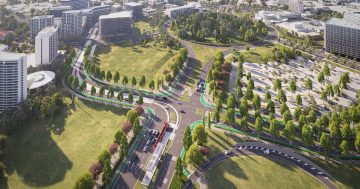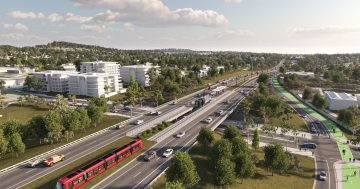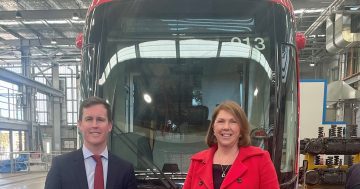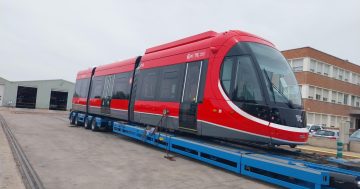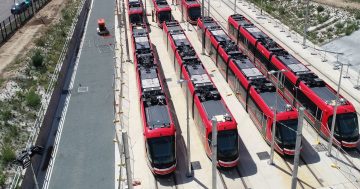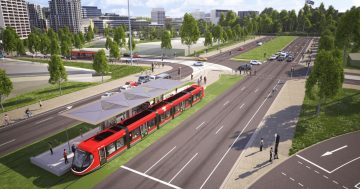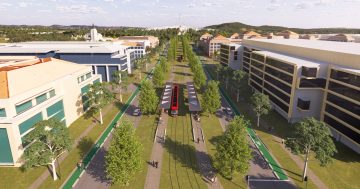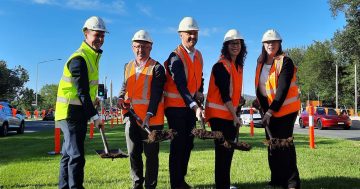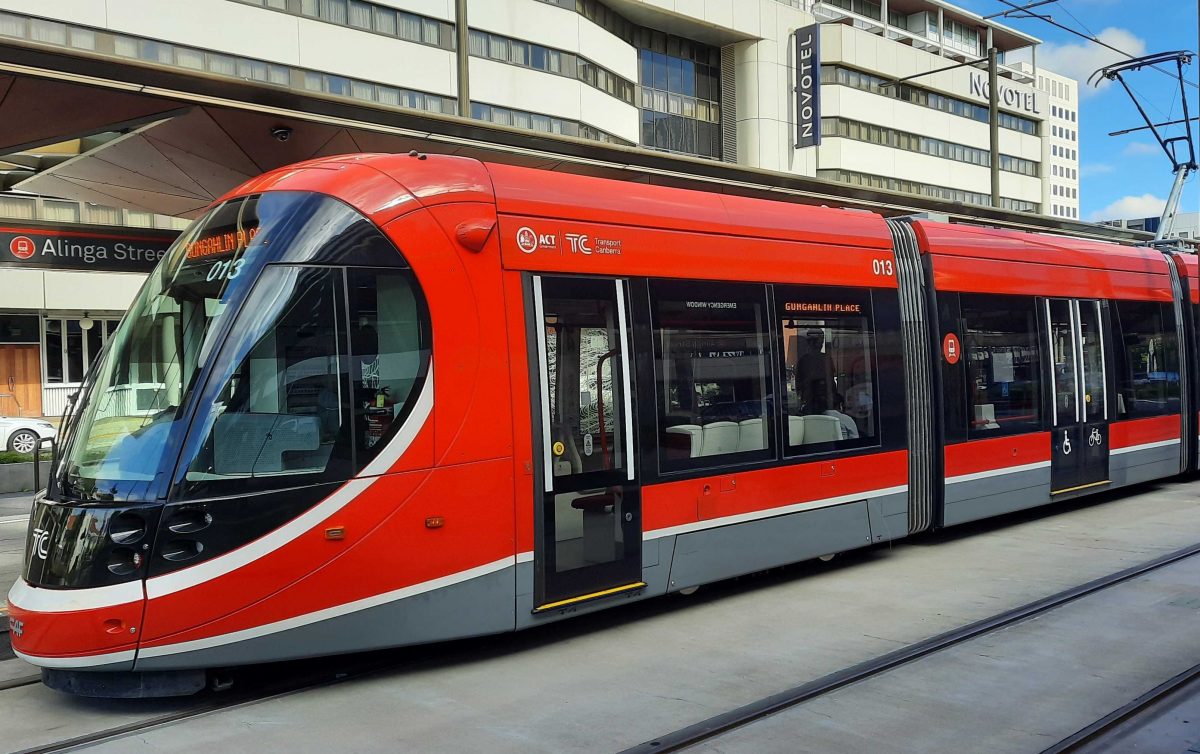
The government is facing calls to provide more information to the public about the next stages of light rail. Photo: Region.
The ACT Government has been called on to provide clearer timeframes and cost estimates for its light rail projects.
Two Legislative Assembly committee reports have added weight to Opposition claims that the government has not been fully open with the public about the raising of London Circuit, stage 2A to Commonwealth Park and stage 2B to Woden.
The reports come as Transport and City Services Minister Chris Steel rebuffed a motion in the Legislative Assembly from Canberra Liberals Deputy Leader Jeremy Hanson who cited the traffic disruptions from the London Circuit project to call for the dumping of stage 2B, which is now Liberal policy.
Mr Hanson criticised the Minister for telling Canberrans to just choose a different route into the city or to travel at different times of the day.
“Currently, under this Labor-Greens government, Canberrans can expect traffic congestion for up to a decade,” Mr Hanson said.
He said it was not just the delays approaching the city but also the impacts on roads around Woden, Weston Creek, Molonglo and Tuggeranong. He called on the government to publish current delay statistics for these areas.
“Canberrans are frustrated, and the Minister must explain to Canberrans how to ‘find a different way into the city’ when all major roads from the south are affected,” Mr Hanson said.
Mr Steel told the Assembly that government measures were working and traffic impacts so far had been better than anticipated.
He said increased average travel times have been about 4.5 minutes from Cotter Road to the City via Parkes Way, 6.5 minutes from Cotter Road to the City via Commonwealth Avenue, 1.5 minutes from Hindmarsh Drive to the City via the Monaro Highway and Parkes Way, and 4 minutes from Hindmarsh Drive to the City via the Monaro Highway and Canberra Avenue.
During the AM peak, inbound traffic on Kings Avenue had increased by 17 per cent, inbound traffic on Commonwealth Avenue had decreased by about 23 per cent, and inbound traffic on Edinburgh Avenue/Parkes Way had increased by about 20 per cent.
Mr Steel also said that the London Circuit project would include construction of a side track on Commonwealth Avenue which would allow four lanes of traffic to be maintained during most of the construction.
The project is expected to take two years but a committee report has called on Mr Steel to be more precise now that contacts have been signed.
“The committee is of the view that, since the contract has now been signed for the RLC Project and works have commenced, the ACT Government should provide more information to the people of ACT, such as a clear expected completion date for the finalisation of the project, as soon as practicable,” it said.
Construction of light rail stage 2A will only begin once the London Circuit project is complete.
The same committee also called on the government to provide the estimated completion date and cost for stage 2B as soon as practicable and update the estimated timeframes after contracts are signed.
The committee said it was concerned at some of the numbers talked about for the construction of Light Rail stage 2, potentially over $3 billion.
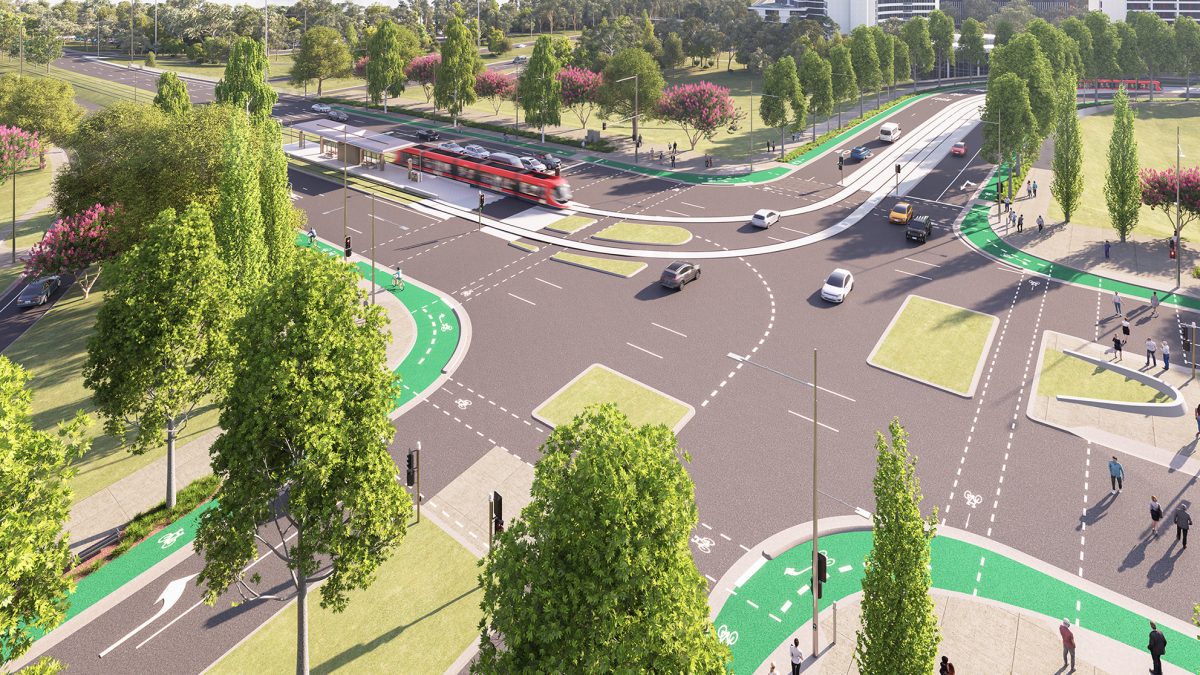
An artist’s impression of the level intersection of London Circuit and Commonwealth Avenue for light rail Stage 2A. Photo: ACT Government.
Mr Steel told the committee that more detail would be available once the business case for stage 2B was finalised.
“Until that point, and until that detail work has been done, particularly on some of the early design of stage 2B, to get an understanding of the cost and timing – the costs of delivering the project at the time that we actually assess the business case – it would be entirely speculative to come up with an assumption around costs right now,” he said.
Mr Steel said the government’s attention would move to stage 2B once contracts were signed with Canberra Metro for Stage 2A, expected later in the year.
Another committee report into the ACT Auditors-General’s report on stage 2A from 2021, which found that the cost may have been underestimated and the project’s economic benefits overstated, also called on the government to provide more information to the public.
It said the incomplete, redacted business case released to the community made a comprehensive assessment of stage 2A difficult.
The report backed the Auditor-General’s recommendations and called on the government to explain how the business case came to its conclusions.
It recommended explicitly defining costs and benefits included in the economic analysis and making all non-commercially sensitive information publicly available.
It urged the government to publish a benefits realisation plan for Light Rail stage 2A as soon as possible.
The government has said that the redactions were made in the publicly released documents “to protect the commercial interests of taxpayers as procurement activities had not yet commenced”.
But Auditor-General Michael Harris suggested the government was not transparent about such big and ongoing projects.
“If the public cannot have faith in and do not have access to reasonable information in relation to this stage, it brings into question the veracity of information that is put out into the public domain for future stages,” he said.
The committee also recommended the government provide an economic analysis of a city-wide network alongside any single-stage analysis for the light rail project.












